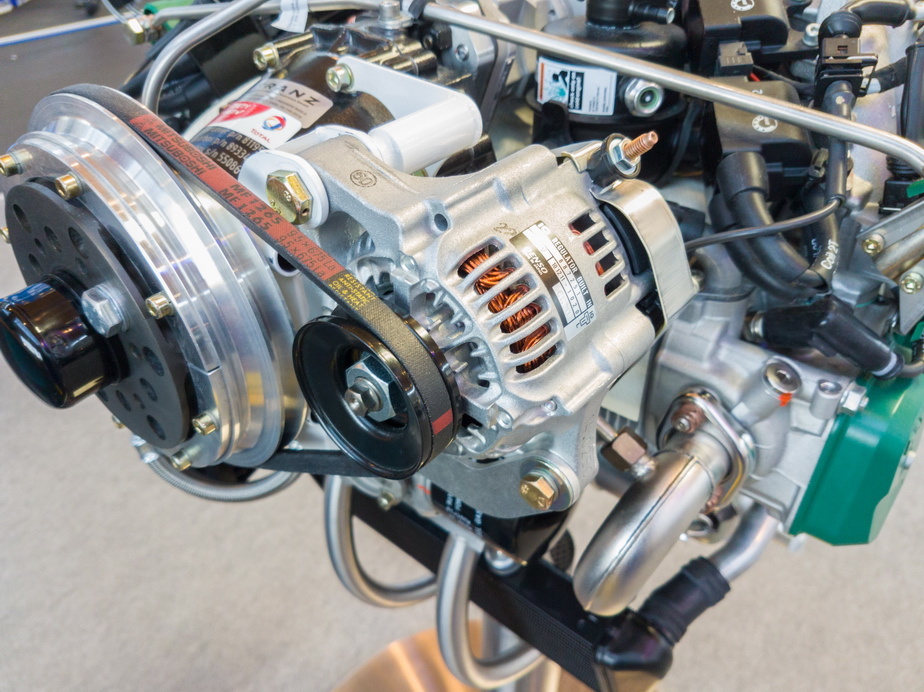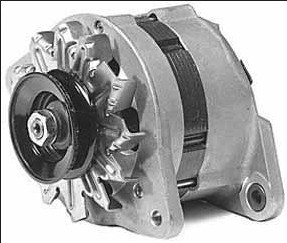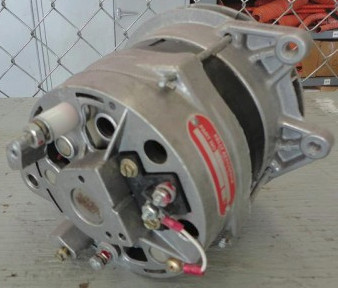I took this pic at Aero Friedrichshafen

This Rotax is using the Denso alternator used here which is curious since it doesn’t develop much useful power until you are in cruise. Depending on how fast you spin it, it can do 20A (at 28V, more at 14V) which is fine for most of the relevant aircraft types, but you get barely a few amps out of it at the sort of rpm at which one is taxiing. So the battery is being drained until you are airborne, whereas a normal size alternator


will give you say 30A at taxi speed (say 1200rpm on the prop).
Curiously both the small and the big alternators use a similar field current of about 3-5A, but the bigger one generates way more power at low rpm.
What do Rotax owners have?
The pictured Rotax external alternator is approximately 40A output (12V). The standard set-up is an integral alternator (generator) in the back of the engine which has an output of 20A. The internal generator is a flywheel/magnets/coils affair also used for the ignition and tacho output.
The standard integral 20A can cope on most LSA day/VFR aircraft (especially with LED lights) but any Night/IFR aircraft really needs the 40A external alternator (pitot heat, more avionics etc).

Incidentally, beyond that, the Tecnam P2006T MMA surveillance etc aircraft normally runs the external 40A alternator on one engine and a 28V 80A (I think) alternator on the other for the mission equipment. One French operator had external alternators as standard fit for the aircraft and used the 20A integral ‘generators’ for powering his mission equipment (powerline inspection stuff).
Interesting they get 40A out of it.
Looking at the pulley ratio it is about 3x so that would be the secret. Vac pump drive mounted alternators run at 1.3x prop rpm, only (on Lyco engines).
My whole TB20 draws about 25A with everything running (about 15A with “enroute nonessentials” off) but a load analysis would point to way more – because the spec sheets of the various appliances are mostly hugely conservative.
Back to the alternator in the top photo, would that keep the battery topped up during taxi?
I’ve never seen of heard of any of the Tecnams that I have been involved with having issues with the alternators not keeping up with demand. I’ve flown the P2008 and a bit of P2006T plus a lot of working and ground runs on P2006T, P2008 and P200JF (with external alternator) without any issues.
The only problem of battery discharge I have seen was after an hour or two of circuits on a miserable day in a Day/VFR P2002JF with the integral generator only (20A) and the standard motorcycle battery (Night/VFR have a Gill G25 as standard). This aircraft had a GNS430 and because of the conditions we had nav lights, strobes, landing light on (all pre LED), electric fuel pump and avionics (GNS430). A standard 12V GE landing lamp pulls 10A on its own. LED landing lights 1A.
On the RV-12 with dual Dynon SkyView LED nav, strobes and landing light, Dynon Com, SL30, Dynon autopilot, electric fuel pump, transponder, PowerFLARM etc we never have an issue with the 20A integral alternator. In cruise mode the alternator load is approx 12A, worst case is with avionics, pump and lights all on during take-off which peaks at around 19A.
Rotax info on the external alternator:

